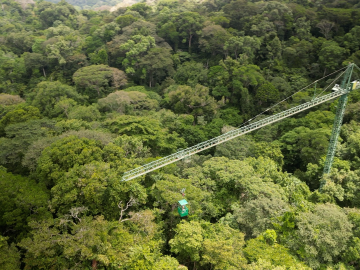
Filter News
Area of Research
News Topics
- (-) Energy Storage (36)
- (-) Grid (23)
- (-) Machine Learning (31)
- (-) Molten Salt (3)
- (-) Physics (22)
- (-) Quantum Science (36)
- (-) Transportation (30)
- 3-D Printing/Advanced Manufacturing (58)
- Advanced Reactors (19)
- Artificial Intelligence (53)
- Big Data (39)
- Bioenergy (29)
- Biology (27)
- Biomedical (35)
- Biotechnology (12)
- Buildings (30)
- Chemical Sciences (35)
- Clean Water (8)
- Composites (12)
- Computer Science (85)
- Coronavirus (25)
- Critical Materials (9)
- Cybersecurity (4)
- Education (2)
- Emergency (3)
- Environment (67)
- Exascale Computing (28)
- Fossil Energy (4)
- Frontier (22)
- Fusion (25)
- High-Performance Computing (48)
- Hydropower (1)
- Isotopes (25)
- ITER (2)
- Materials (26)
- Materials Science (63)
- Mathematics (9)
- Mercury (1)
- Microelectronics (2)
- Microscopy (12)
- Nanotechnology (19)
- National Security (36)
- Neutron Science (58)
- Nuclear Energy (46)
- Partnerships (29)
- Polymers (12)
- Quantum Computing (20)
- Security (11)
- Simulation (24)
- Space Exploration (5)
- Statistics (3)
- Summit (31)
Media Contacts

Scientists using high-resolution aerial scans and computational modeling concluded that wildfires, storms and selective logging have become key drivers behind rainforest carbon emissions, outpacing clear-cutting practices.

ORNL has partnered with Western Michigan University to advance intelligent road infrastructure through the development of new chip-enabled raised pavement markers. These innovative markers transmit lane-keeping information to passing vehicles, enhancing safety and enabling smarter driving in all weather conditions.

A team led by scientists at ORNL identified and demonstrated a method to process a plant-based material called nanocellulose that reduced energy needs by a whopping 21%, using simulations on the lab’s supercomputers and follow-on analysis.

As a mechanical engineer in building envelope materials research at ORNL, Bryan Maldonado sees opportunities to apply his scientific expertise virtually everywhere he goes, from coast to coast. As an expert in understanding how complex systems operate, he’s using machine learning methods to control the process and ultimately optimize performance.

Researchers for the first time documented the specific chemistry dynamics and structure of high-temperature liquid uranium trichloride salt, a potential nuclear fuel source for next-generation reactors.

Nuclear physicists at the Department of Energy’s Oak Ridge National Laboratory recently used Frontier, the world’s most powerful supercomputer, to calculate the magnetic properties of calcium-48’s atomic nucleus.

ORNL’s Joshua New was named the 2024 Researcher of the Year by R&D World magazine as part of its R&D 100 Professional Award winners.

A digital construction platform in development at Oak Ridge National Laboratory is boosting the retrofitting of building envelopes and giving builders the tools to automate the process from design to installation with the assistance of a cable-driven robotic crane.

A study by more than a dozen scientists at the Department of Energy’s Oak Ridge National Laboratory examines potential strategies to integrate quantum computing with the world’s most powerful supercomputing systems in the pursuit of science.
Researchers at ORNL recently demonstrated an automated drone-inspection technology at EPB of Chattanooga that will allow utilities to more quickly and easily check remote power lines for malfunctions, catching problems before outages occur.


